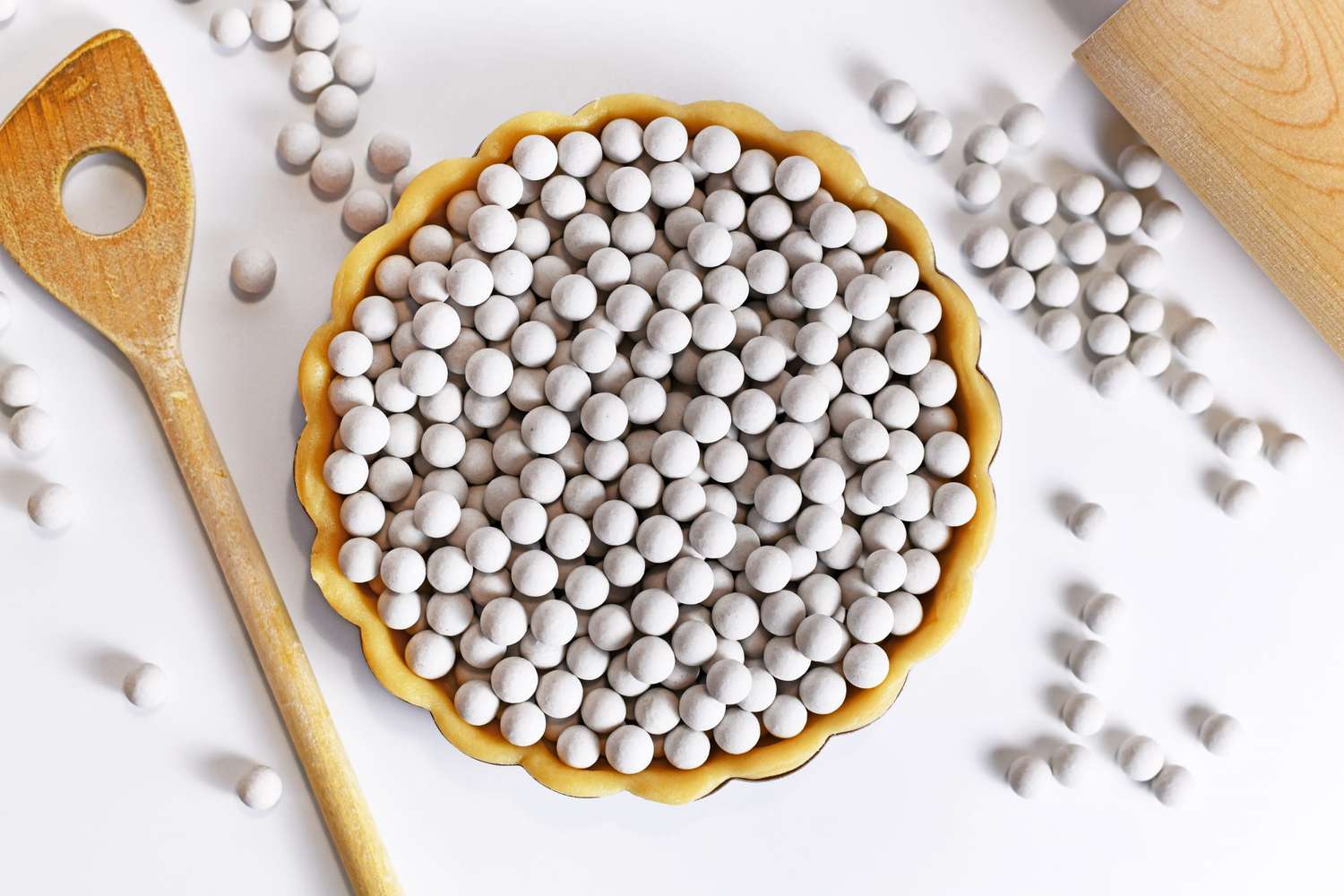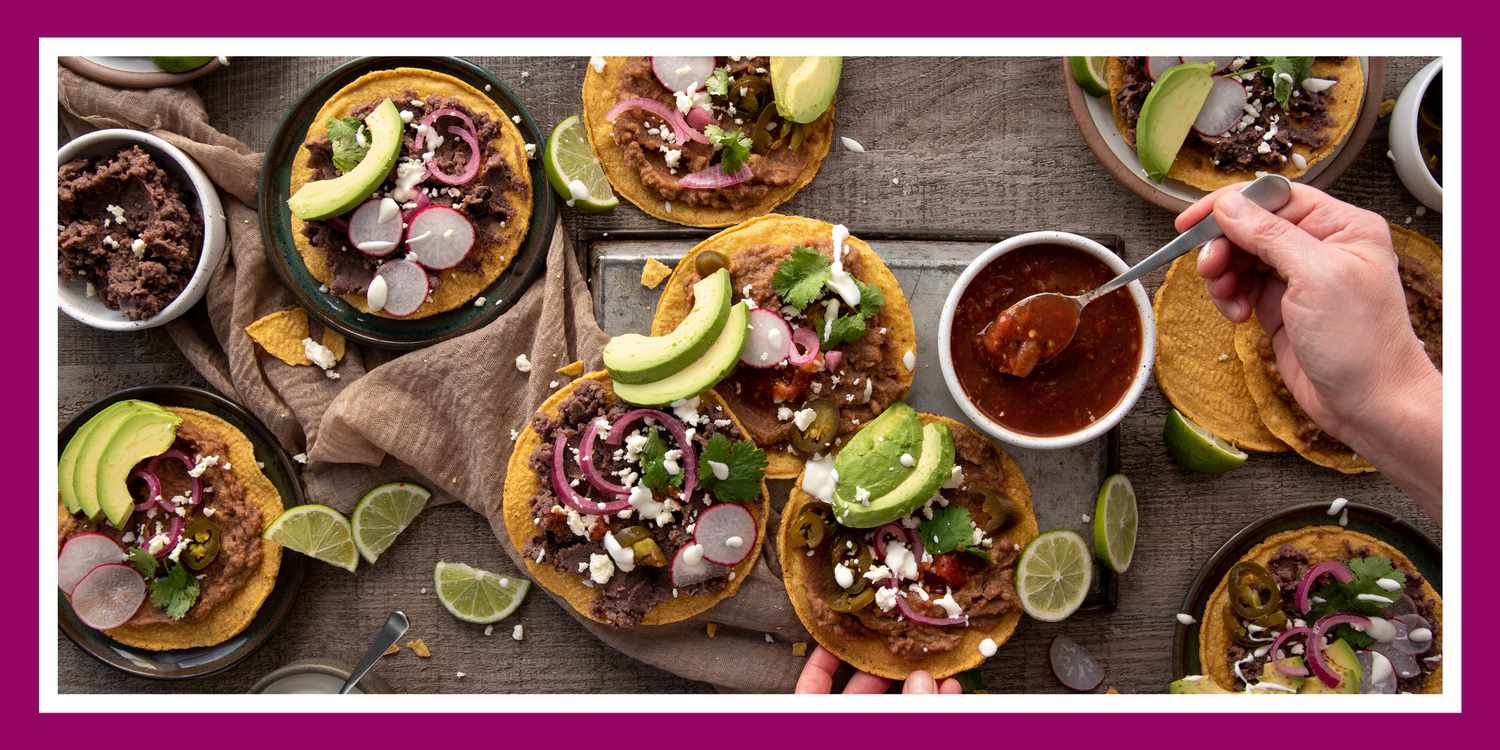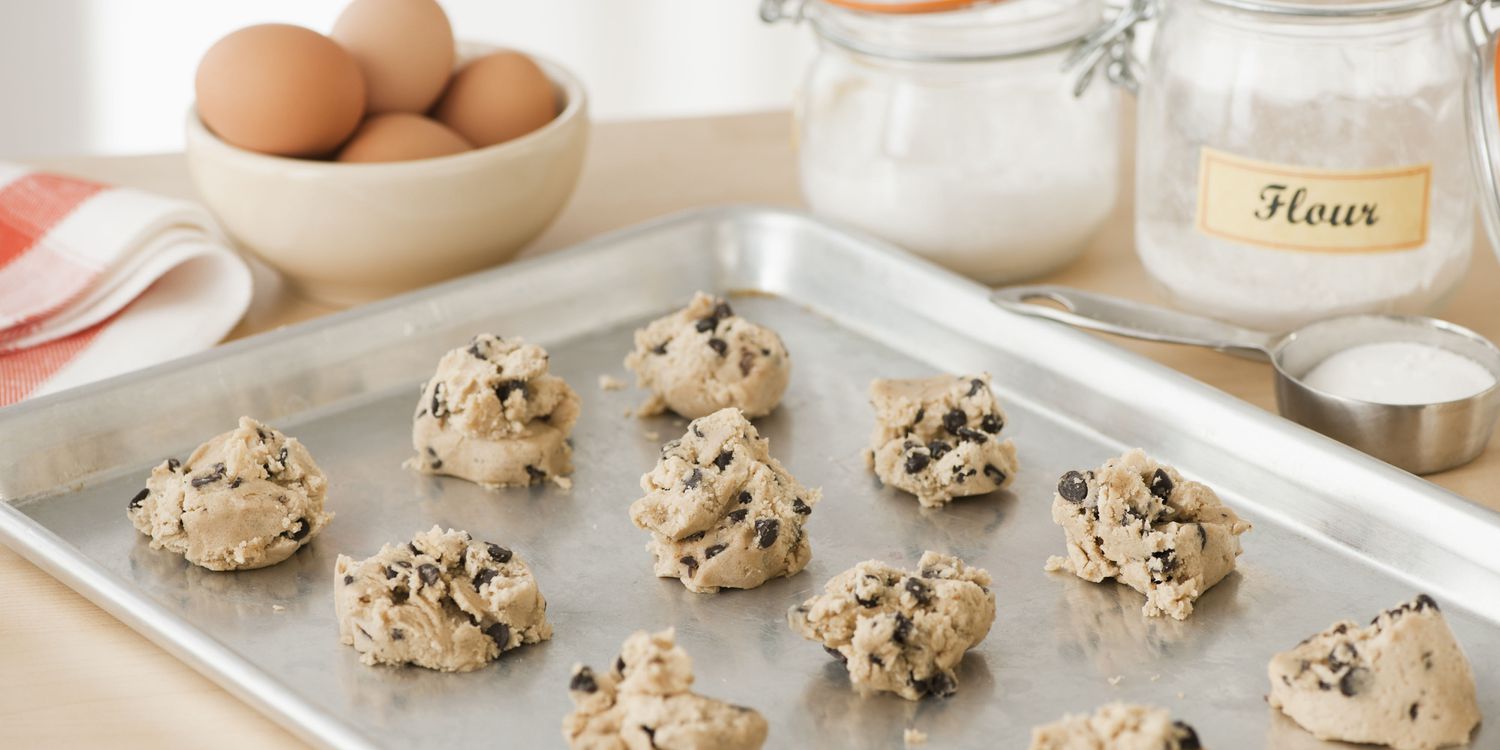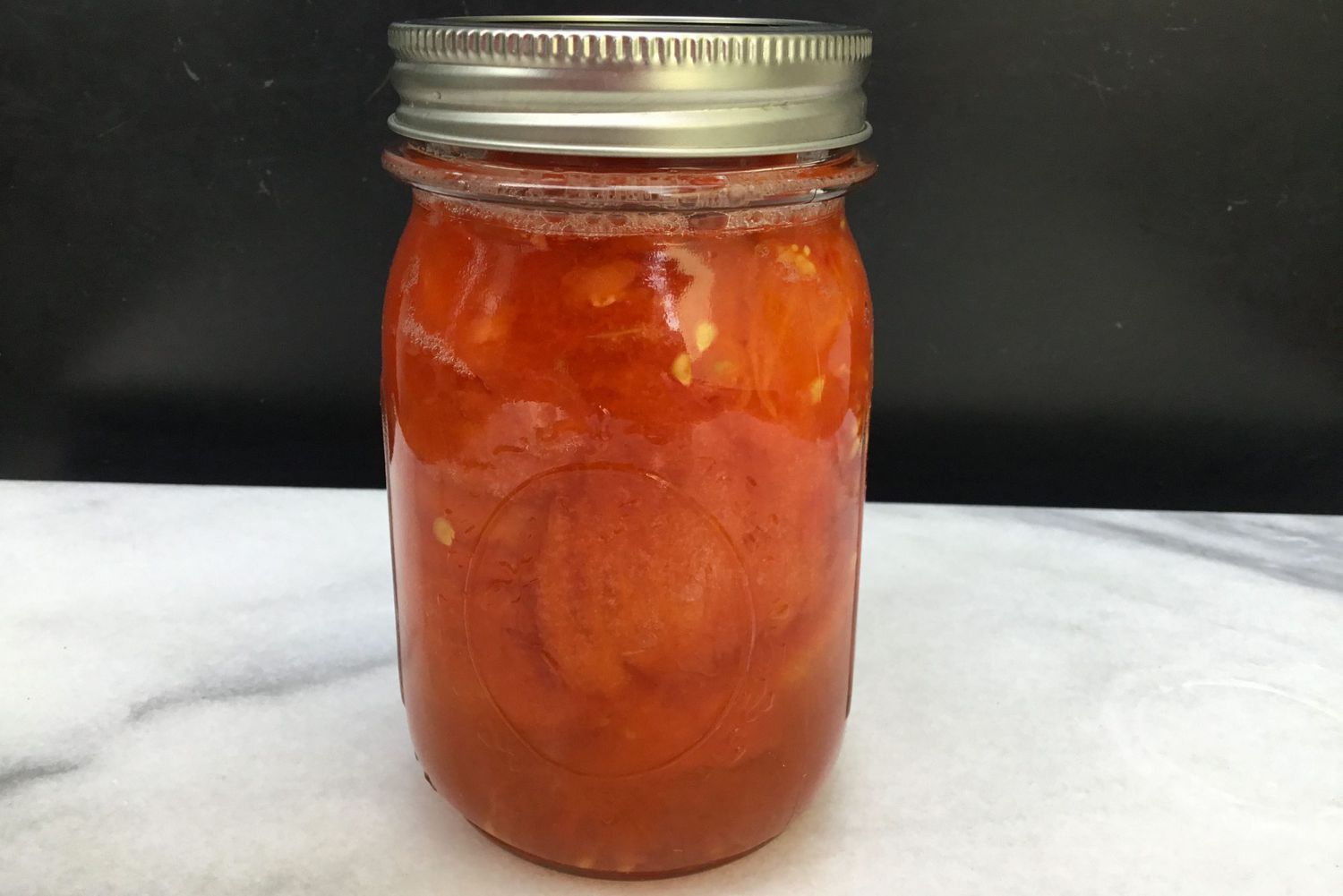Beginner bakers may be surprised to learn that you can’t just stick a pie into the oven and call it a day. Depending on the type of crust you’re working with, you may need to do something called a “blind bake” before you add your filling. And if you are blind baking, chances are you need to use pie weights. Here’s what you need to know about pie weights and when/how to use them:
What Is Blind Baking?
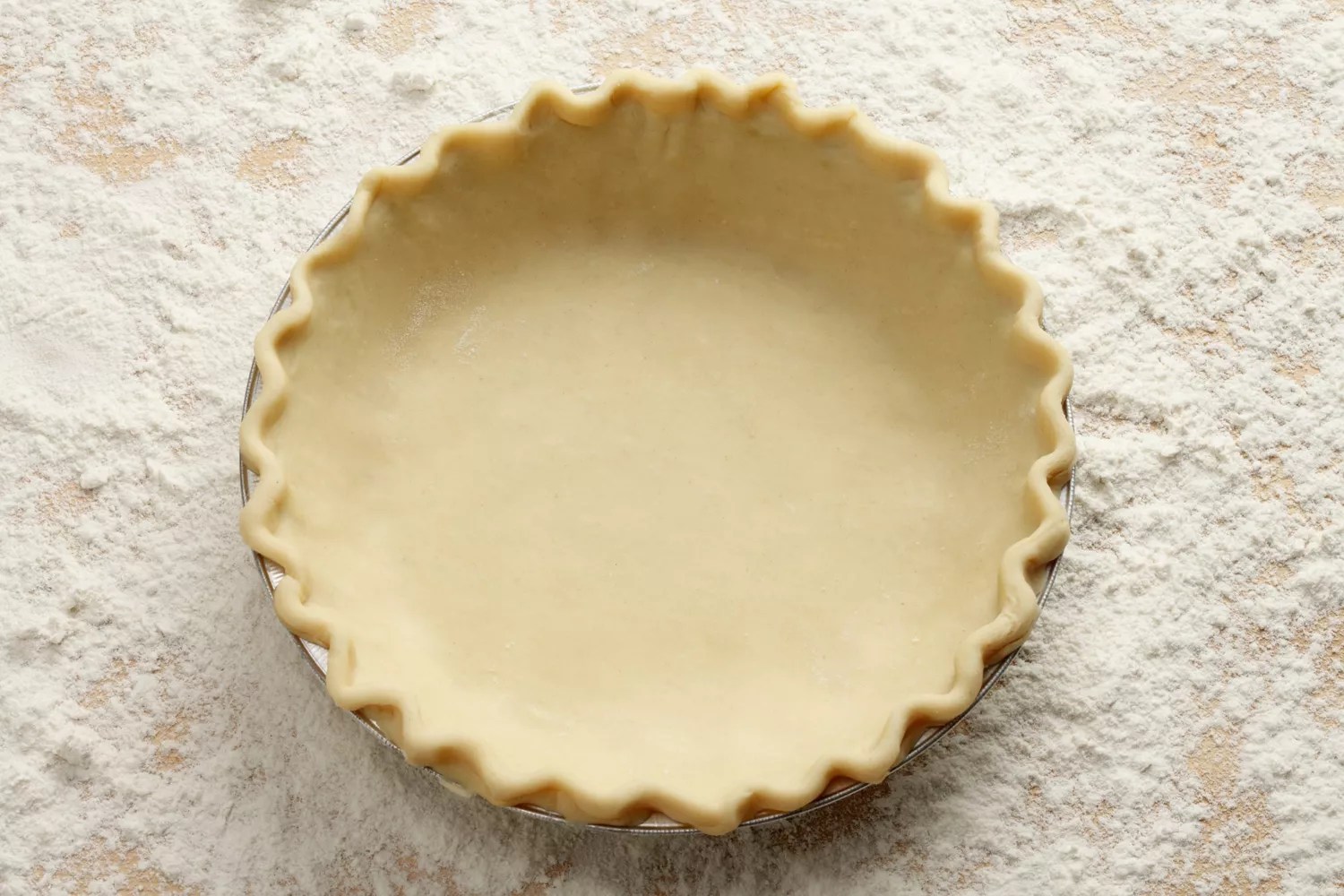
Blind baking is simply baking a pie crust without the filling. You may need to do this for a few reasons:
- You intend to fill your pie with an unbaked filling (such as a chocolate pudding pie filling that’s prepared on the stove). In this case, you’re going to want to fully bake the crust in one fell swoop.
- Your filling has a shorter bake time than your crust (like this pecan pie). In this case, you’ll only partially bake the crust on the first go-round. The crust will finish cooking when the pie is baked as a whole.
- Your filling and pie crust have similar bake times, but your filling is exceptionally wet and prone to sogginess (think fruit pies). You’ll only partially bake the crust during the blind bake in this instance too.
If you’re making a pie with a crumb crust, you don’t have to worry about doing anything extra to your crust during blind baking. Just throw it into the oven and bake it according to your recipe. If you’re making a pastry crust, however, things aren’t quite so simple.
What Are Pie Weights?

When you’re dealing with a pastry crust, you have to consider a bit of chemistry. As the dough bakes, the fat melts at a different rate than the rest of the ingredients. This is a good thing because it creates steam, which is responsible for making the flaky layers you associate with a perfectly prepared pastry crust. But when there’s no filling to weigh it down, steam will cause the crust to puff up and deflate, and you’ll be left with a wrinkly, uneven mess that’s not the best fit for any filling.
Pie weights (small ceramic or metal balls) serve as a temporary filling during the first round of baking. They’re not extremely heavy, but they’re substantial enough to weigh the dough down and prevent puffing.
You can use legitimate pie weights (which you can buy online or in stores) or items you already have on hand, like dried beans or rice. Before we discuss what you can and can’t use as pie weights, we need to talk about how to use them.

How Do You Use Them?
It’s not hard to use pie weights, but you do need to follow a series of simple steps:
- Make your crust according to your recipe or unroll your store-bought crust. Press it into your pie plate and crimp the edges to create your pie shell.
- Line your pie shell with parchment paper. Don’t skip this step, or your pie weights might stick to the dough. Use a square or circle of parchment paper that’s large enough to allow for plenty of overhang — you’ll need to be able to easily grab the sides without spilling the hot weights everywhere.
- Add the pie weights to the crust, filling the shell completely. If you are baking a deep-dish pie, you will need to use more weights. Bake the weight-filled crust according to your recipe, just until it begins to brown. If your recipe doesn’t specify times or temperatures, 425 degrees F (220 degrees C) for 10 to 15 minutes is a safe bet.
- Remove the crust from the oven. Using the parchment paper overhang, carefully lift the pie weights out of the crust and pour them into a heat-proof bowl to cool down.
- Place the crust back into the oven to expose the parts of the crust that were previously covered directly to the heat. This should only take about 5 minutes.
- Remove the crust from the oven and let it cool to room temperature before proceeding with your recipe.
Where to Buy Pie Weights
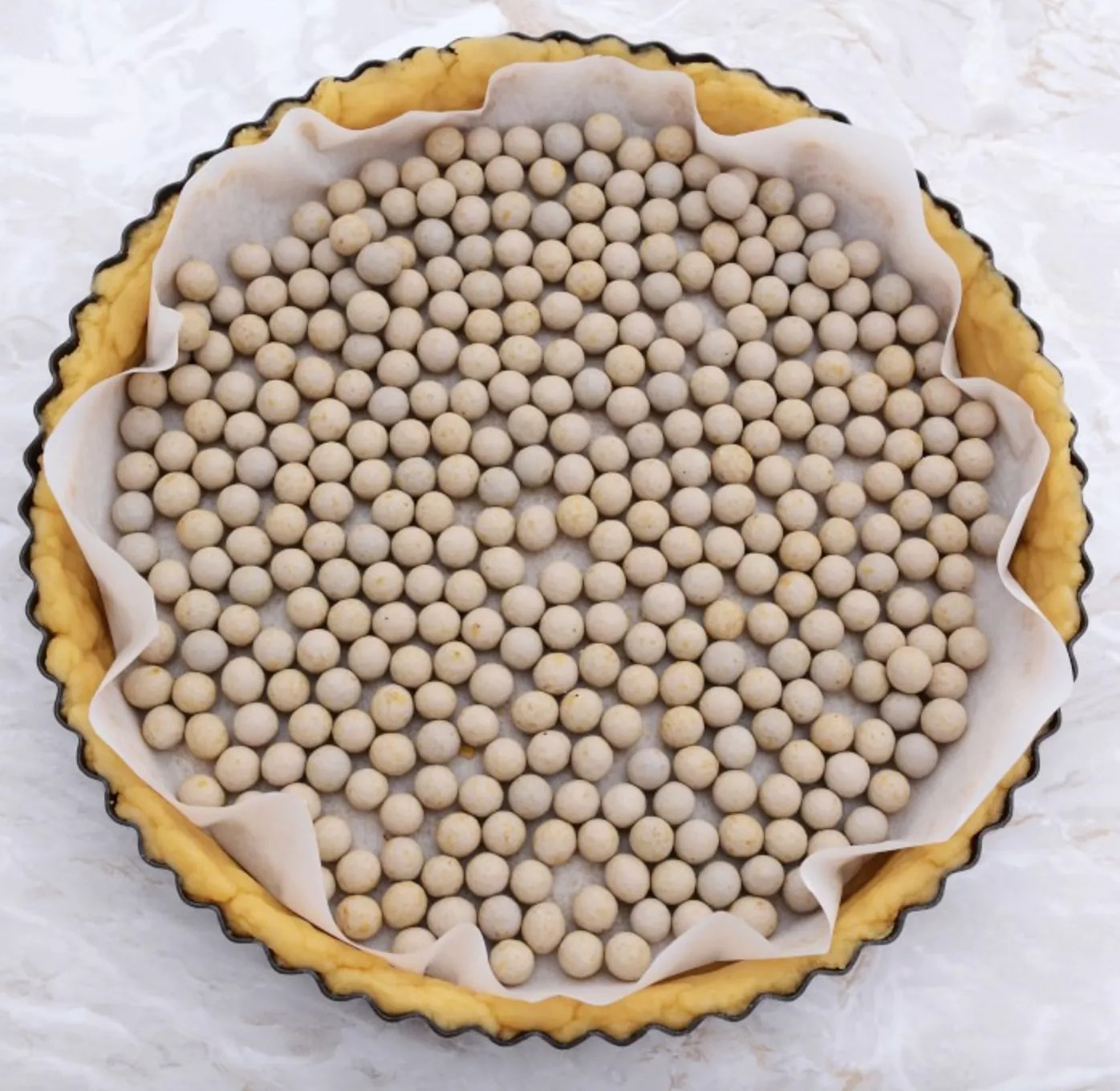
You can buy pie weights in cooking, home, or craft stores, or you can find them online. Ceramic pie weights (from Mrs. Anderson’s Baking, for example) are a popular choice and can be found from online retailers. Williams Sonoma also carries popular unglazed ceramic beads, which evenly distribute heat.
Another option is a beaded pie chain that is linked together for easier storage.
Pie Weight Substitutes
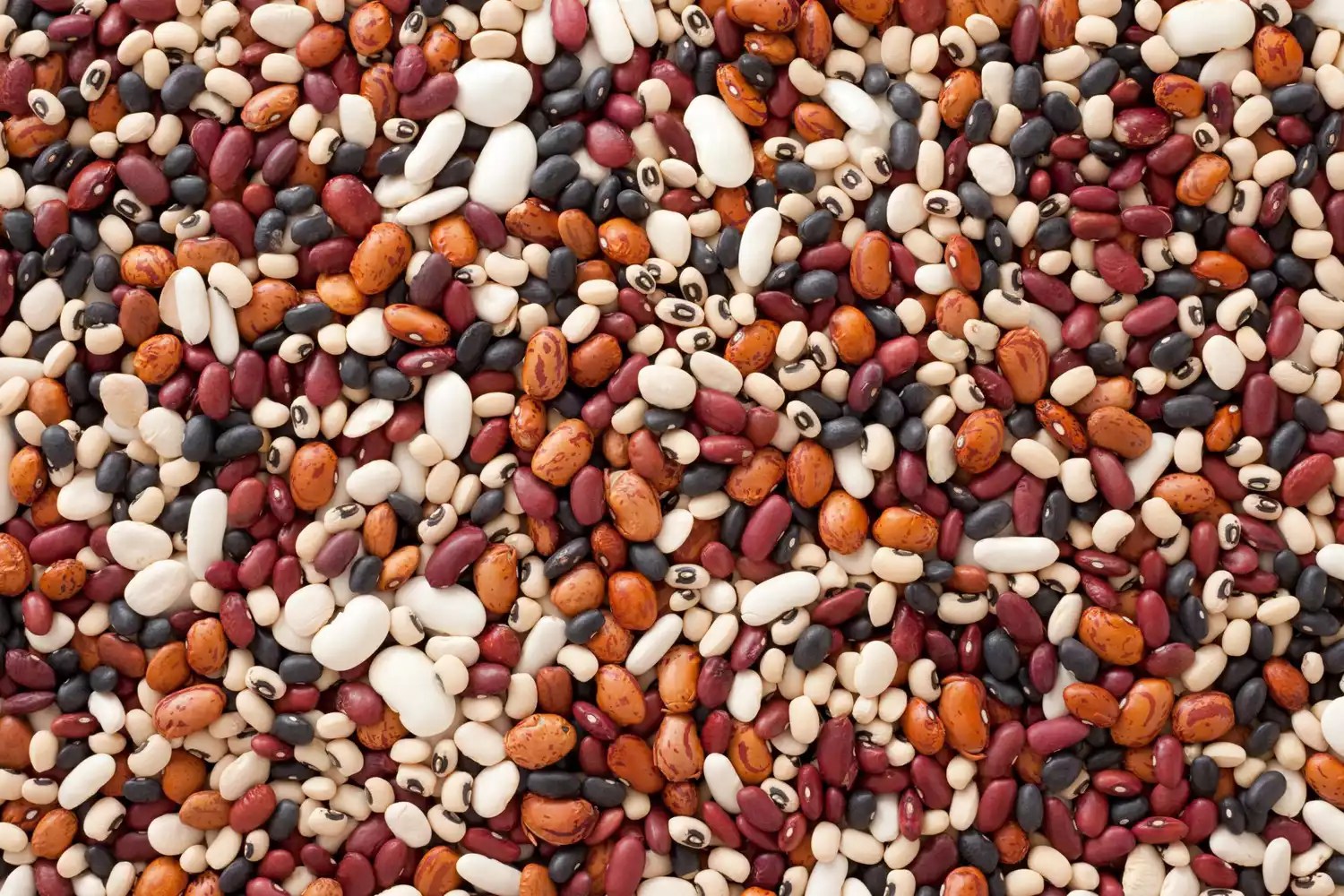
While ceramic pie weights are nice to have, they’re not necessary, If you have dried beans or rice on hand, they work exactly the same! Beans are a popular choice because their size and shape mimic that of store-bought ceramic beads. You won’t be able to cook with the beans after you’ve baked them, so take that into consideration before pouring the last of your beans into your pie shell.
Common pie weight options are:
- Dried beans (it doesn’t matter what kind, just use what you have on hand)
- Dried rice
- Granulated sugar
- Popcorn kernels
Related:
- Top Seasonal Fall Pies
- 15 Best Summer Pies
- 10 Easy Tips to Make the Best Pies

